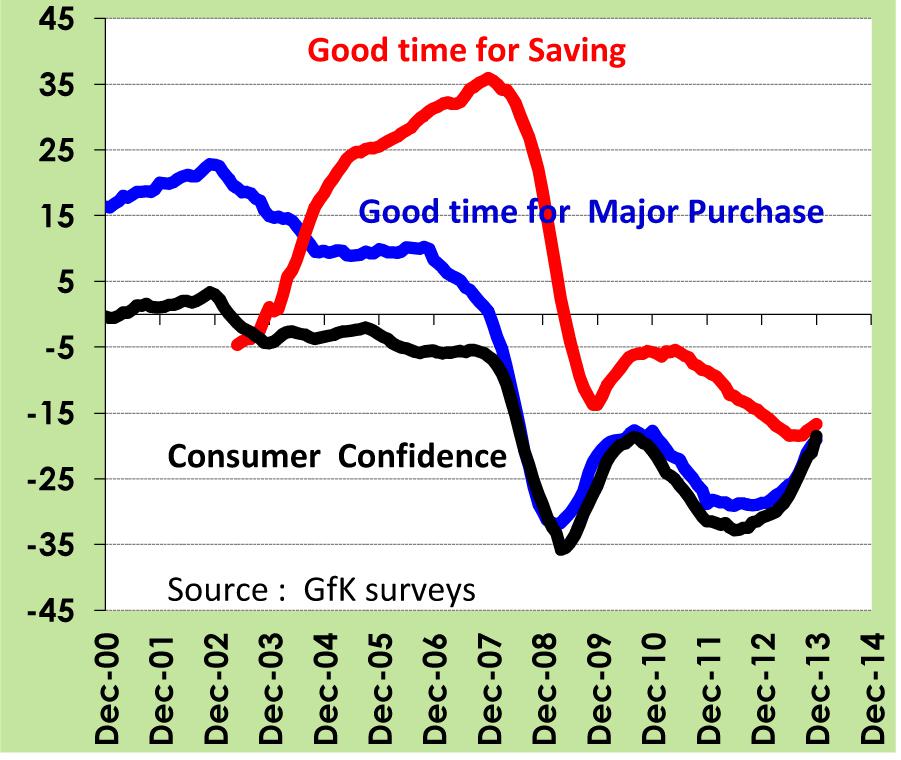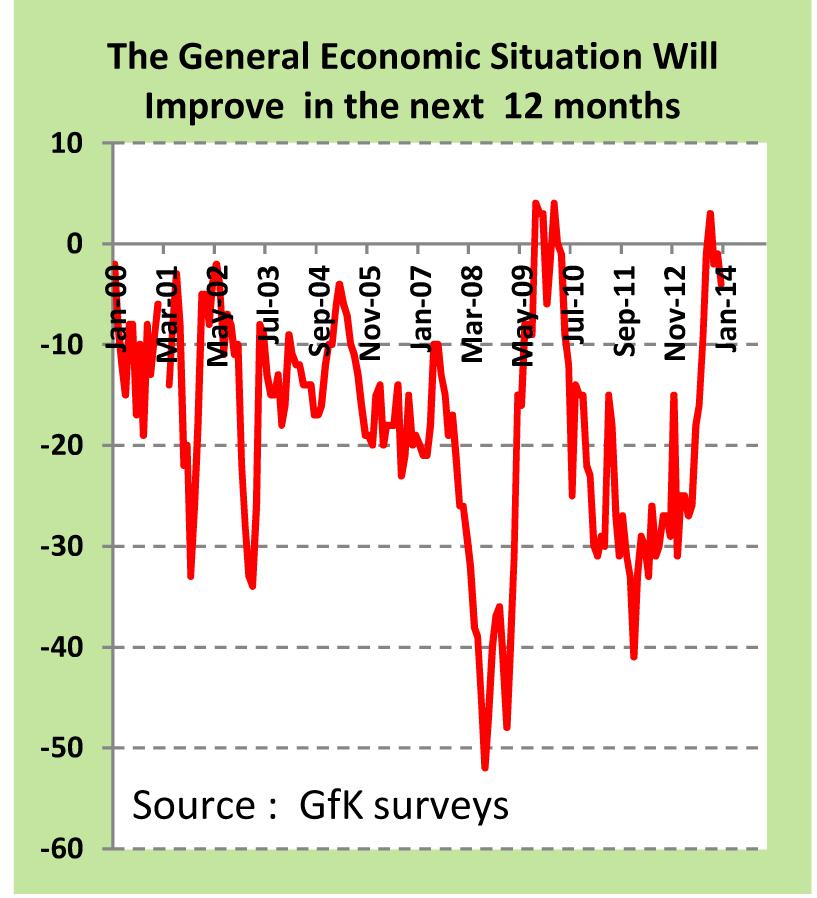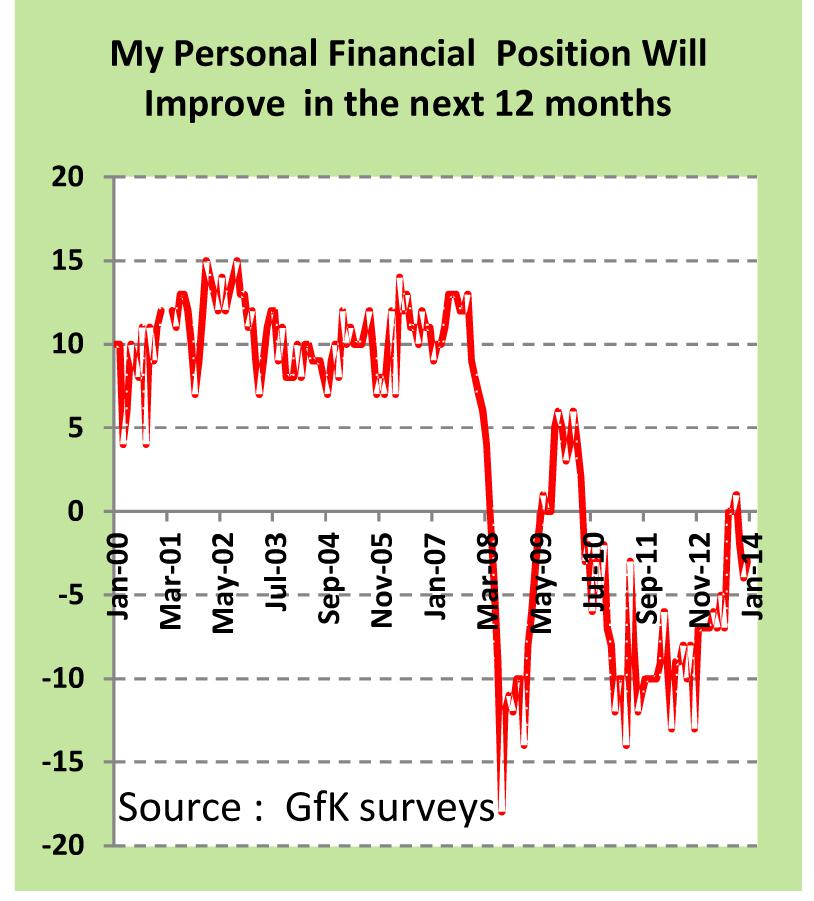Don’t let’s get carried away by talk of recovery
Over the next year or so us poor souls in the UK are going to have the Tories telling us that things are getting better in the run-up to the general election. Labourites will be stressing how bad things are and the Lib Dems will be somewhere in between.
- Written by
- Andrew Papworth
- Added
- January 03, 2014

Over the next year or so us poor souls in the UK are going to have the Tories telling us that things are getting better in the run-up to the general election. Labourites will be stressing how bad things are and the Lib Dems will be somewhere in between.
For charities, the state of the economy is very important. It is only natural that people will be less able and willing to donate to good causes if they’re worried about their own finances.
One of the best indicators of how people are feeling about the economy is GfK’s monthly Consumer Confidence survey. They ask a number of questions about informants’ feelings about their own financial situation at the time of the interview, their prospects in the coming year and their view of the general economic situation and its prospects.
For each measure they subtract those giving negative answers from those giving positive answers; then take an average of all the scores to give their consumer confidence score (the black line in the chart below).

As can be seen in that chart, up to about the end of 2007 the optimists and the pessimists almost balanced out – although the pessimists already slightly outnumbered the optimists. Confidence fell off the cliff in 2008 to reach rock bottom, recovered a bit in 2010, only to fall again in 2011-12. It’s certainly true that confidence has returned a little in 2013 but – as the chart makes clear – it’s still considerably below the pre-recession levels.
The red and blue lines emphasise that the impact on attitudes to spending or saving have been even more marked. Because, as was described above, the GfK overall confidence measure is composed of averages of averages it is a pretty rough and ready indicator, but digging down into the separate scores throws more light on to what has been happening.
The chart below shows that there has indeed been a marked improvement recently in the way people see the UK economy moving – actually it’s closer to an optimistic view than it was before the recession. But that will partly be explicable by the fact that people think things will get better from a pretty low base.

However, the chart below here shows that this optimism has only partly followed through into the way people regard their own financial prospects. Before the recession those answering positively typically outnumbered those answering negatively by about 10 percentage points. Since the recession the position has typically been reversed and – although there has been some recent improvement – the balance remains negative. It certainly looks as if people remain to be convinced that any improvement in the general situation will trickle down to them yet.


This matters to fundraisers because most people will naturally put themselves and their families first when money is tight. It might well be thought surprising that charitable giving has held up as well as it has in the last five years of austerity.

















